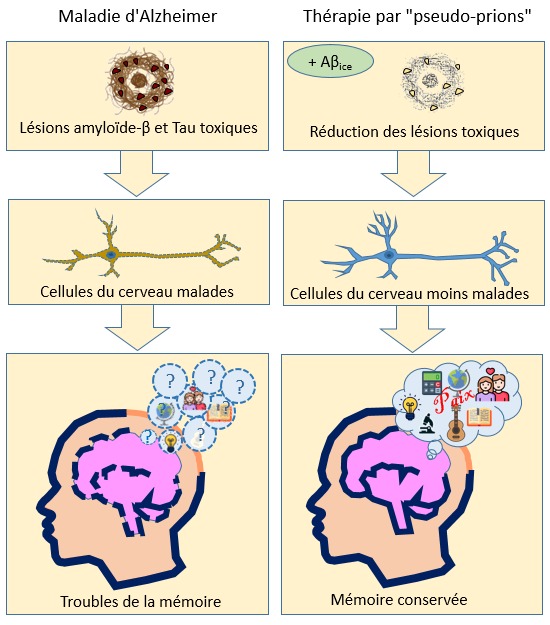Published on
Updated
Reading 2 min.
Will a protective Alzheimer’s mutation discovered in the Icelandic population revolutionize the management of this neurodegenerative disease? Promising results in mice demonstrate a curative and preventive effect in a single injection.
Alzheimer’s disease first manifests itself through memory loss, followed over the years by more general and disabling cognitive disorders. Around 900,000 people suffer from Alzheimer’s disease today in France. They should be 1.3 million in 2020, taking into account the increase in life expectancy.
Two proteins at the origin of Alzheimer’s disease
The most shared hypothesis today on the origin of this neurodegenerative disease is that the brains of patients present two types of lesions: amyloid deposits and neurofibrillary degenerations. Each of these lesions is associated with a protein: the β-amyloid peptide for amyloid deposits, and the phosphorylated tau protein for neurofibrillary tangles.
The accumulation of these two proteins causes lesions that alter neurons and their synapses, ultimately leading to the inability to create new memories. Today, treatments remain very limited, despite the recent arrival of drugs on the market.
A protective protein discovered in the brains of Icelanders
Faced with this disease, there is numerous research and a study carried out on an animal model deserves attention. To try to stop these processes, scientists injected for the first time a mutated amyloid-β protein (Icelandic mutation) into the brain of mouse models of the disease. Discovered about ten years ago, this very rare protein called amyloid-βice was discovered in certain people from Iceland who show improved cognitive aging and never develop Alzheimer’s disease.

And the results were very surprising: the researchers noted a return of synapses to their normal state and an absence of memory loss characteristic of the disease. The administration of this modified protein would thus protect the brains of the mice studied from all the dysfunctions linked to the disease. Furthermore, scientists have shown that a single administration is necessary to trigger this protection which acts for several months.
Towards a new class of protective drugs
These results go against the scientific hypothesis currently in the majority which agreed on the fact that the administration of amyloid-β proteins could only amplify the pathology, because they behave like “pseudo-” proteins. prion” (a protein capable of changing shape and going from a normal form to an abnormal form harmful to the brain and capable of propagating this abnormality to surrounding cells – this is the case for neurodegenerative diseases such as mad cow disease or Creutzfeldt-Jakob disease).
This study is therefore the first time to show, in mice, that amyloid-β “pseudo-prion” proteins can protect the brain from the attacks characteristic of Alzheimer’s disease. This result could thus be the starting point for a new category of preventive therapies to treat people suffering from neurodegenerative diseases at early stages and block the progression of the pathology, thanks to the injection of protective prions.
